Fit for a Queen: The Clothing of Cleopatra Selene, Egyptian Princess, Roman Prisoner, and African Queen
Cleopatra VII, a figure immortalised by Shakespeare's pen, Hollywood's glitz, and the centre of recent controversies, is a titan in the annals of history. Yet it's her daughter, Cleopatra Selene, who offers a tale of resilience and survival. She held the helm of Mauretania for over two decades, demonstrating strength, leadership, and adaptability. Dr. Jane Draycott, an acclaimed historian and author of "Cleopatra’s Daughter: Egyptian Princess, Roman Prisoner, African Queen", invites us into the world of this lesser-known queen, showcasing her life stages, her evolving attire, and the powerful symbolism behind it. Get ready to delve into a story that's as captivating as it is enlightening. Who was Cleopatra Selene? Cleopatra Selene (circa 40-5 BCE) was the daughter of Cleopatra VII, Queen of Egypt, and Marcus Antonius (better known today as Marc Antony), the Roman consul and triumvir. At the age of six she was declared Queen of Crete and the Cyrenaica by her father in the Donations of Alexandria in 34 BCE, and she was around ten years old when her parents were famously defeated by Octavian at the Battle of Actium in 31 BCE and Egypt was conquered and annexed by the Roman Empire. Her life can be divided into three distinct stages: Egyptian princess, Roman prisoner, and African queen. Each stage would have required different types of dress, influenced by the culture and customs of the time. Clothing during her childhood in Alexandria During her childhood in Alexandria, Cleopatra Selene would have worn either Greek or Egyptian dress as the occasion called for it. In Greek dress, she would have worn a chiton, a type of tunic made from a single piece of fabric that was draped and pinned around the body. In Egyptian dress, she might have worn a kalasiris, a close-fitting linen garment adorned with jewellery and embellishments. In portraits of her from this period, we can see that she arranged her hair in a similar style to her mother’s famous ‘melon coiffeur’, topped with a diadem indicating her royal status (Figure 1, Figure 2). Clothing during her time as a Roman prisoner Cleopatra Selene was around ten years old when her parents were defeated by Octavian at the Battle of Actium in 31 BCE and Egypt was conquered and annexed by the Roman Empire in 30 BCE. Following her parents’ suicides, she was taken back to Rome by her parents’ enemy Octavian. There is one specific historical occasion upon which we know exactly what she wore: when she and her fraternal twin brother Alexander Helios were paraded through the streets of Rome, exhibited alongside an effigy of their deceased mother in Octavian’s Triple Triumph in 29 BCE, they were dressed as a matching pair, as the Moon and the Sun in reference to their second names, references to the goddess of the moon Selene and the god of the sun Helios. Cleopatra Selene spent the remainder of her childhood as an erstwhile prisoner in his household on the Palatine Hill in the heart of the city. While living as a prisoner in Rome, Cleopatra Selene would have adopted Roman dress to conform to her new environment. As a child, she would have worn the toga praetexta, a garment reserved for children and magistrates, which featured a purple border to signify her noble status. Her hair would have been worn long and loose. She married Juba, the son of the deposed King Juba of Numidia, when she was about fifteen in around 25 BCE. At that stage, Cleopatra Selene would have dressed as a respectable matrona (a married woman) in a stola (a long, sleeveless tunic), a palla (a large rectangular shawl
Shawl: (Persian: shāl from Hindi: duśālā – Shoulder Mantle), a shawl is a South Asian version of a scarf
Scarf: (English), usually a rectangular piece of cloth loosely worn over the shoulders, upper body and arms, and sometimes also over the head. worn or wrapped loosely over the shoulders and is usually made of wool. ), and her hair would have been tied back and arranged neatly under a veil. After their marriage, Octavian, now the first Roman Emperor Augustus, sent the couple to Mauretania (modern-day Morocco and Algeria) to rule as King and Queen of a Roman client kingdom.
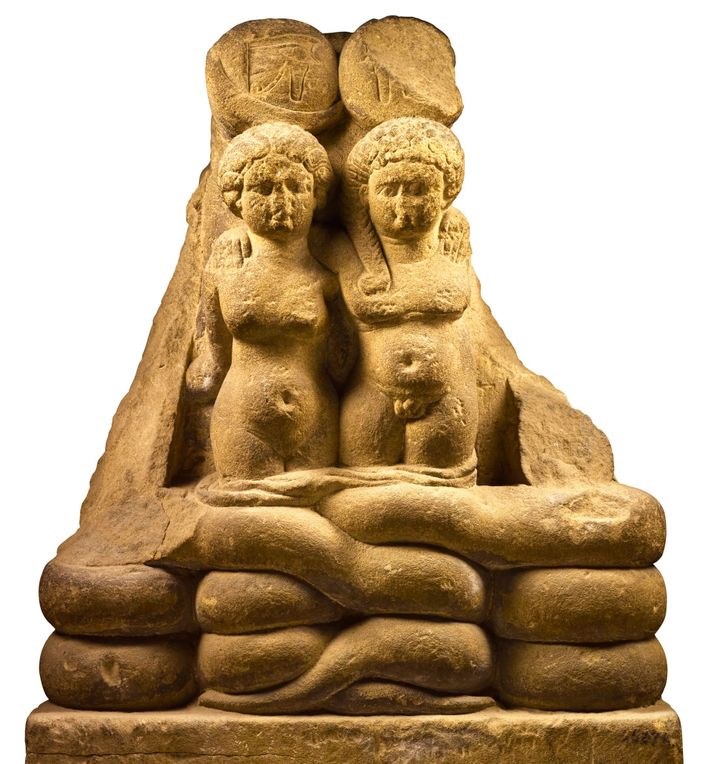 Figure 1 – Cleopatra Selene (left) as a child with her twin brother Alexander Helios.
Figure 1 – Cleopatra Selene (left) as a child with her twin brother Alexander Helios.
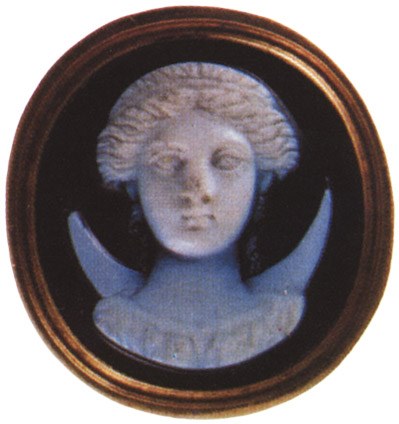 Figure 2: Cleopatra Selene as an adolescent. Clothing during her time as African Queen in Mauretania As an adult in Mauretania, Cleopatra Selene would have had the freedom to choose her preferred style of dress. She may have alternated between different cultural styles depending on the occasion and the audience, such as Greek, Roman, and African dress. Her clothing would have been made from luxurious materials and adorned with fine jewellery, emphasising her royal status and wealth. Identifying Cleopatra Selene by her dress There are no securely identified portraits of Cleopatra Selene apart from those on her coins, issued both in conjunction with Juba and autonomously in her own name when she was Queen of Mauretania (Figure 3). These indicate that she followed the example set by her mother, Cleopatra VII, and presented herself in the manner of a Hellenistic queen, with her hair styled in a bun at the nape of her neck and held in place by a diadem, the traditional headwear of a Hellenistic king and, sometimes, even a queen. Originally, a diadem was a strip of white cloth, knotted at the back of the wearer’s head, with the ends left dangling below. An alternative ancient headdress that was used to indicate the elevated status of its wearer was the stephane, a circlet with a pediment at the front that stood upright from the head. The early Ptolemaic queens who featured on coins were depicted wearing the stephane topped by a veil rather than the diadem, indicative of their divine status.
Figure 2: Cleopatra Selene as an adolescent. Clothing during her time as African Queen in Mauretania As an adult in Mauretania, Cleopatra Selene would have had the freedom to choose her preferred style of dress. She may have alternated between different cultural styles depending on the occasion and the audience, such as Greek, Roman, and African dress. Her clothing would have been made from luxurious materials and adorned with fine jewellery, emphasising her royal status and wealth. Identifying Cleopatra Selene by her dress There are no securely identified portraits of Cleopatra Selene apart from those on her coins, issued both in conjunction with Juba and autonomously in her own name when she was Queen of Mauretania (Figure 3). These indicate that she followed the example set by her mother, Cleopatra VII, and presented herself in the manner of a Hellenistic queen, with her hair styled in a bun at the nape of her neck and held in place by a diadem, the traditional headwear of a Hellenistic king and, sometimes, even a queen. Originally, a diadem was a strip of white cloth, knotted at the back of the wearer’s head, with the ends left dangling below. An alternative ancient headdress that was used to indicate the elevated status of its wearer was the stephane, a circlet with a pediment at the front that stood upright from the head. The early Ptolemaic queens who featured on coins were depicted wearing the stephane topped by a veil rather than the diadem, indicative of their divine status. 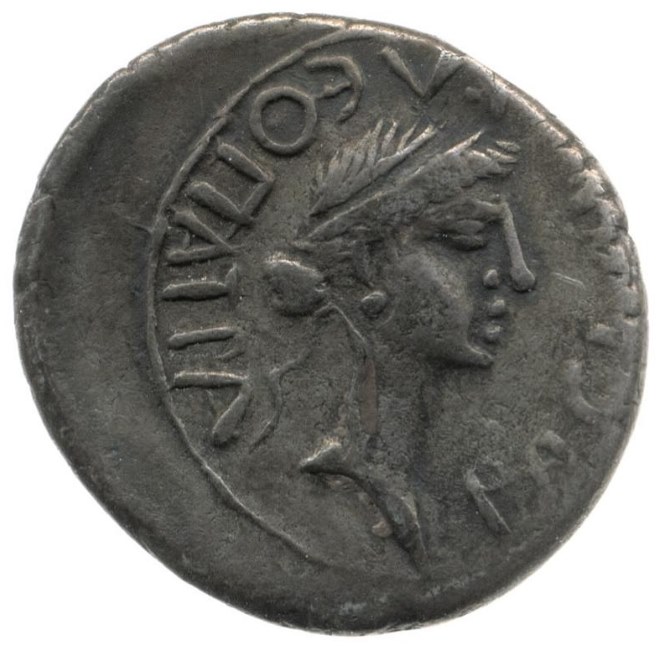 Figure 3: Cleopatra Selene as an adult.
Figure 3: Cleopatra Selene as an adult. 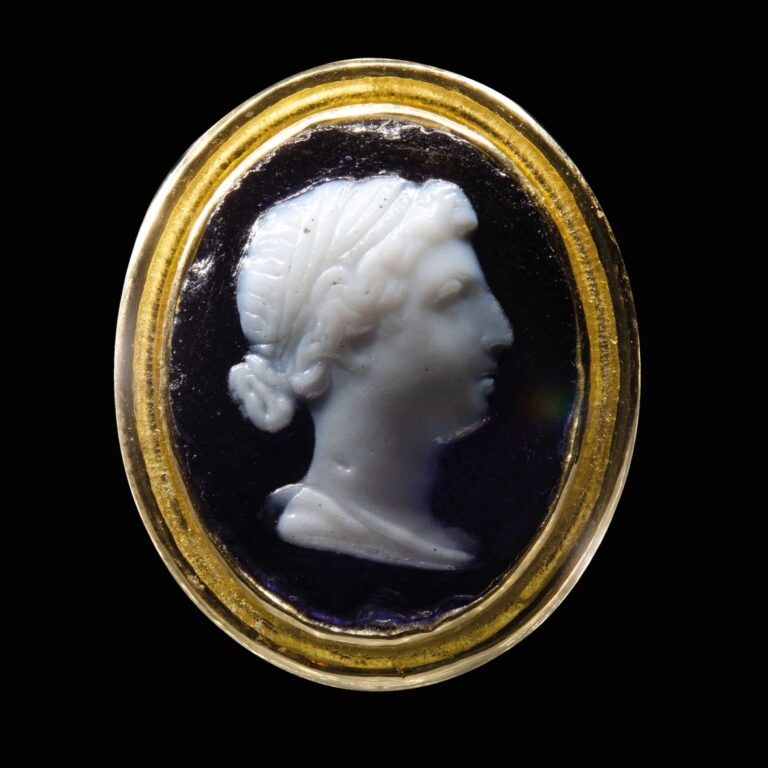 Figure 4: Cleopatra Selene as an adult.Cleopatra Selene may, however, also be depicted on the north frieze of the Ara Pacis Augustae, the Altar of Augustan Peace, along with one of her children (Figure 5) on the Campus Martius in Rome. The fact that the woman and child on the frieze are both wearing fringed mantles marks them out as a pair. This type of article of clothing, usually dyed purple with a fringe of gold, has Hellenistic royal origins and was particularly associated with the flamboyant and luxurious inhabitants of the regions in the eastern Mediterranean, making it an inappropriate costume for an ordinary Roman citizen to don, but perfectly acceptable for an allied monarch or a member of their immediate family. This purple mantle would have been an excellent way for Cleopatra Selene and her son to display not only themselves but also the kingdom of Mauretania, as presumably the purple dye was sourced from the dyeworks located on the Purple Islands of the Mauritanian coast.
Figure 4: Cleopatra Selene as an adult.Cleopatra Selene may, however, also be depicted on the north frieze of the Ara Pacis Augustae, the Altar of Augustan Peace, along with one of her children (Figure 5) on the Campus Martius in Rome. The fact that the woman and child on the frieze are both wearing fringed mantles marks them out as a pair. This type of article of clothing, usually dyed purple with a fringe of gold, has Hellenistic royal origins and was particularly associated with the flamboyant and luxurious inhabitants of the regions in the eastern Mediterranean, making it an inappropriate costume for an ordinary Roman citizen to don, but perfectly acceptable for an allied monarch or a member of their immediate family. This purple mantle would have been an excellent way for Cleopatra Selene and her son to display not only themselves but also the kingdom of Mauretania, as presumably the purple dye was sourced from the dyeworks located on the Purple Islands of the Mauritanian coast. 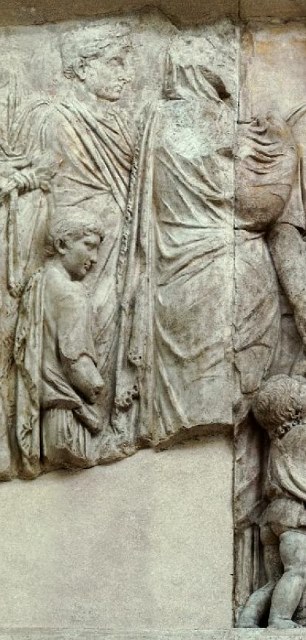 Figure 5: Cleopatra Selene and her son on the Ara Pacis Augustae. Similarities between Cleopatra Selene and Cleopatra VII Like Cleopatra VII, Cleopatra Selene seems to have been especially close to the goddess Isis, and may, like her mother, have presented herself as the goddess Isis on public occasions. She certainly issued coins depicting the goddess and a selection of her accoutrements including her horned crown and her ceremonial sistrum rattle. Despite her identification with the goddess Isis, Cleopatra VII preferred to portray herself wearing the diadem. Perhaps she meant to indicate her position as queen regnant rather than queen consort. It seems that Cleopatra Selene followed her example in this, emphasising that she ruled Mauretania alongside Juba as his equal, not as his subordinate. There are also several cameo and intaglio portraits (Figure 4) that have been identified as Cleopatra Selene, based on their late first century BCE date and their depiction of a woman with her headdress and hair arranged in this way. Symbolism in Cleopatra Selene’s depictions Cleopatra Selene used a range of symbols consistently throughout her adult life, not only references to herself such as crescent moons, referring to her second name, but also Egyptian motifs such as crocodiles, ibises, and the accoutrements of the goddess Isis. It is also possible that she wore an elephant scalp headdress on occasion, as there are several emblemata that depict a woman doing so who has been identified as her (Figure 6, Figure 7), in reference to her African origins.
Figure 5: Cleopatra Selene and her son on the Ara Pacis Augustae. Similarities between Cleopatra Selene and Cleopatra VII Like Cleopatra VII, Cleopatra Selene seems to have been especially close to the goddess Isis, and may, like her mother, have presented herself as the goddess Isis on public occasions. She certainly issued coins depicting the goddess and a selection of her accoutrements including her horned crown and her ceremonial sistrum rattle. Despite her identification with the goddess Isis, Cleopatra VII preferred to portray herself wearing the diadem. Perhaps she meant to indicate her position as queen regnant rather than queen consort. It seems that Cleopatra Selene followed her example in this, emphasising that she ruled Mauretania alongside Juba as his equal, not as his subordinate. There are also several cameo and intaglio portraits (Figure 4) that have been identified as Cleopatra Selene, based on their late first century BCE date and their depiction of a woman with her headdress and hair arranged in this way. Symbolism in Cleopatra Selene’s depictions Cleopatra Selene used a range of symbols consistently throughout her adult life, not only references to herself such as crescent moons, referring to her second name, but also Egyptian motifs such as crocodiles, ibises, and the accoutrements of the goddess Isis. It is also possible that she wore an elephant scalp headdress on occasion, as there are several emblemata that depict a woman doing so who has been identified as her (Figure 6, Figure 7), in reference to her African origins. 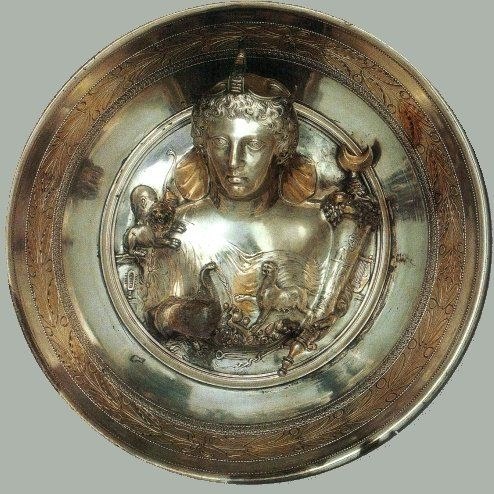 Figure 6: Cleopatra Selene as an African queen.
Figure 6: Cleopatra Selene as an African queen. 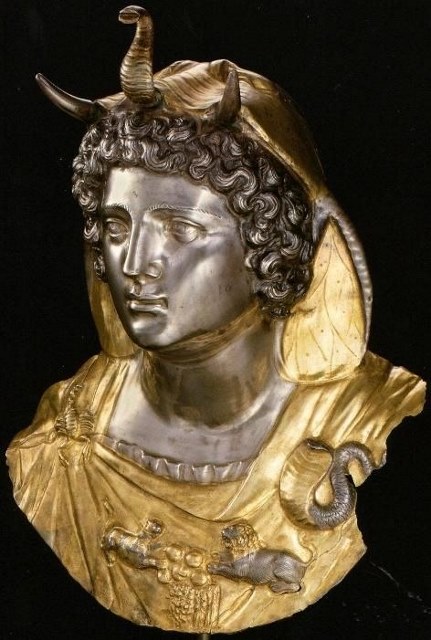 Figure 7: Cleopatra Selene as an African queen. Materials used in Cleopatra Selene’s clothing Mauretania was incredibly rich in natural resources. Factories on islands known as the Purple Islands, of which Mogador was one, just off the Atlantic coast (near modern Essaouira in Morocco) processed the predatory sea snail, the murex, crushing its shell to access the secretions within that produced the Tyrian purple dye that was used to colour the edges of the togas worn by Roman senators and other fine clothing worn by the wealthiest and most illustrious members of Roman society. The remains of these factories, including heaps of discarded shells, can still be seen today. Cleopatra VII is famous for using textiles dyed in “Tyrian purple”. As queen, Cleopatra Selene would undoubtedly have worn clothing dyed purple. She may also have followed in her father’s footsteps and been a collector of precious stones that could be set into signet rings and other types of jewellery. Hellenistic rulers had long been enthusiastic collectors of precious stones of various types, and these collections were known as dactyliotheca. Gems were key markers of wealth, culture, and status – every Roman citizen of consequence had a signet ring set with an intaglio engraved with an image specific to them that they would use to seal, authorise, and verify all their documentation. One of the most renowned artisans in residence at Mauretania’s capital city Iol Caesarea was Gnaios the gem cutter, who carved cameo portraits of some of the most powerful people in the ancient Mediterranean into precious stones, and two of the three works of his that have survived from classical antiquity can be associated with the Mauritanian royal court. During his residence at Iol Caesarea, Gnaios carved a red carnelian intaglio bearing a portrait of Cleopatra Selene, perhaps for Juba himself, in which she wears her hair in her mother’s favourite style, and bears a sceptre, the symbol of her royal authority, at the nape of her neck (Figure 8).
Figure 7: Cleopatra Selene as an African queen. Materials used in Cleopatra Selene’s clothing Mauretania was incredibly rich in natural resources. Factories on islands known as the Purple Islands, of which Mogador was one, just off the Atlantic coast (near modern Essaouira in Morocco) processed the predatory sea snail, the murex, crushing its shell to access the secretions within that produced the Tyrian purple dye that was used to colour the edges of the togas worn by Roman senators and other fine clothing worn by the wealthiest and most illustrious members of Roman society. The remains of these factories, including heaps of discarded shells, can still be seen today. Cleopatra VII is famous for using textiles dyed in “Tyrian purple”. As queen, Cleopatra Selene would undoubtedly have worn clothing dyed purple. She may also have followed in her father’s footsteps and been a collector of precious stones that could be set into signet rings and other types of jewellery. Hellenistic rulers had long been enthusiastic collectors of precious stones of various types, and these collections were known as dactyliotheca. Gems were key markers of wealth, culture, and status – every Roman citizen of consequence had a signet ring set with an intaglio engraved with an image specific to them that they would use to seal, authorise, and verify all their documentation. One of the most renowned artisans in residence at Mauretania’s capital city Iol Caesarea was Gnaios the gem cutter, who carved cameo portraits of some of the most powerful people in the ancient Mediterranean into precious stones, and two of the three works of his that have survived from classical antiquity can be associated with the Mauritanian royal court. During his residence at Iol Caesarea, Gnaios carved a red carnelian intaglio bearing a portrait of Cleopatra Selene, perhaps for Juba himself, in which she wears her hair in her mother’s favourite style, and bears a sceptre, the symbol of her royal authority, at the nape of her neck (Figure 8). As queen, Cleopatra Selene would undoubtedly have worn clothing dyed purple.
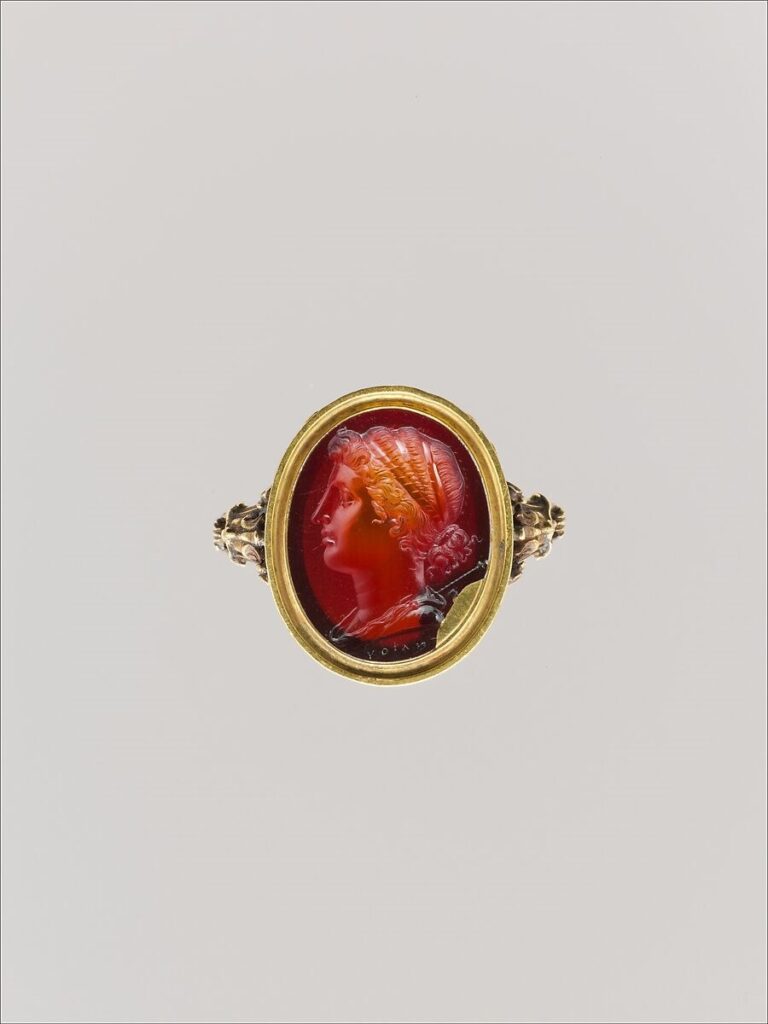 Figure 8: Cleopatra Selene carved by Gnaios. About Jane Draycott Dr. Jane Draycott is a Roman historian and archaeologist, and the author of Cleopatra’s Daughter: Egyptian Princess, Roman Prisoner, African Queen. You can buy her book as a hardback, an e-book, and an audiobook HERE. She investigates science, technology, and medicine in the ancient world, and is particularly interested in the history and archaeology of medicine; impairment, disability, and prostheses; and botany and horticulture. Recently, she has begun exploring the use (and abuse) of history and archaeology in video games, particularly those set in classical antiquity. She has also long had a special interest in Graeco-Roman Egypt and the Roman client kingdom of Mauretania. She was awarded a BA (Hons) in Archaeology and Ancient History and an MA in Ancient History from Cardiff University, an MSc in Forensic Archaeology and Anthropology from Cranfield University, and a PhD in Classics from the University of Nottingham. Following the completion of her doctorate, she was awarded two postdoctoral fellowships: Rome Fellow at the British School at Rome and Lord Kelvin Adam Smith Research Fellow in Classics at the University of Glasgow. Over the last decade, she has worked in academic institutions in the UK and Italy, and excavated sites ranging from Bronze Age villages to First World War trenches across the UK and Europe. She is currently a Lecturer in Ancient History at the University of Glasgow and co-director of the University of Glasgow’s Games and Gaming Lab. Dr Daycott has written books, book chapters, and articles on a range of subjects related to ancient history and archaeology for both specialist and non-specialist readership. Her academic publications include the monographs Prosthetics and Assistive Technology in Ancient Greece and Rome, Approaches to Healing in Roman Egypt and Roman Domestic Medical Practice in Central Italy from the Middle Republic to the Early Empire, and the edited volumes Bodies of Evidence: Ancient Anatomical Votives Past, Present and Future, Prostheses in Antiquity, Women in Historical and Archaeological Video Games, and Women in Classical Video Games. She has discussed aspects of her research on television and radio, in vodcasts, and in podcasts. When she is not reading, writing, or thinking about Roman history and archaeology, she enjoys indulging her wanderlust by travelling to interesting places, playing computer games, cooking vegan food, practising yoga and hooping. She lives in Glasgow with a tyrannical Norwegian Forest Cat named Magnus and is currently renovating a dilapidated Victorian house. You can find her on Twitter as @JLDraycott and Instagram as @jane.draycott.
Figure 8: Cleopatra Selene carved by Gnaios. About Jane Draycott Dr. Jane Draycott is a Roman historian and archaeologist, and the author of Cleopatra’s Daughter: Egyptian Princess, Roman Prisoner, African Queen. You can buy her book as a hardback, an e-book, and an audiobook HERE. She investigates science, technology, and medicine in the ancient world, and is particularly interested in the history and archaeology of medicine; impairment, disability, and prostheses; and botany and horticulture. Recently, she has begun exploring the use (and abuse) of history and archaeology in video games, particularly those set in classical antiquity. She has also long had a special interest in Graeco-Roman Egypt and the Roman client kingdom of Mauretania. She was awarded a BA (Hons) in Archaeology and Ancient History and an MA in Ancient History from Cardiff University, an MSc in Forensic Archaeology and Anthropology from Cranfield University, and a PhD in Classics from the University of Nottingham. Following the completion of her doctorate, she was awarded two postdoctoral fellowships: Rome Fellow at the British School at Rome and Lord Kelvin Adam Smith Research Fellow in Classics at the University of Glasgow. Over the last decade, she has worked in academic institutions in the UK and Italy, and excavated sites ranging from Bronze Age villages to First World War trenches across the UK and Europe. She is currently a Lecturer in Ancient History at the University of Glasgow and co-director of the University of Glasgow’s Games and Gaming Lab. Dr Daycott has written books, book chapters, and articles on a range of subjects related to ancient history and archaeology for both specialist and non-specialist readership. Her academic publications include the monographs Prosthetics and Assistive Technology in Ancient Greece and Rome, Approaches to Healing in Roman Egypt and Roman Domestic Medical Practice in Central Italy from the Middle Republic to the Early Empire, and the edited volumes Bodies of Evidence: Ancient Anatomical Votives Past, Present and Future, Prostheses in Antiquity, Women in Historical and Archaeological Video Games, and Women in Classical Video Games. She has discussed aspects of her research on television and radio, in vodcasts, and in podcasts. When she is not reading, writing, or thinking about Roman history and archaeology, she enjoys indulging her wanderlust by travelling to interesting places, playing computer games, cooking vegan food, practising yoga and hooping. She lives in Glasgow with a tyrannical Norwegian Forest Cat named Magnus and is currently renovating a dilapidated Victorian house. You can find her on Twitter as @JLDraycott and Instagram as @jane.draycott. Share
Tags
Related Post
Leave a comment




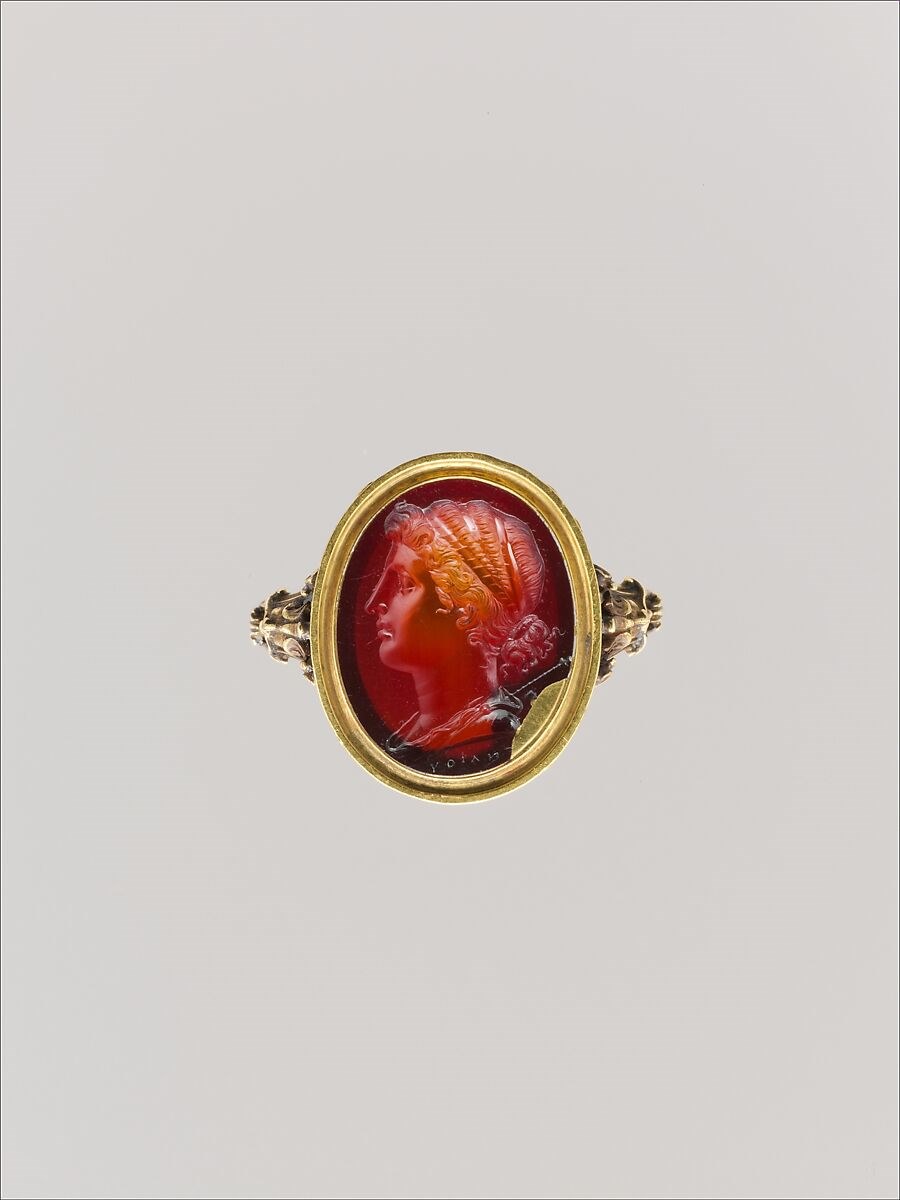
 Figure 1 – Cleopatra Selene (left) as a child with her twin brother Alexander Helios.
Figure 1 – Cleopatra Selene (left) as a child with her twin brother Alexander Helios. Figure 2: Cleopatra Selene as an adolescent.
Figure 2: Cleopatra Selene as an adolescent. Figure 3: Cleopatra Selene as an adult.
Figure 3: Cleopatra Selene as an adult. Figure 4: Cleopatra Selene as an adult.
Figure 4: Cleopatra Selene as an adult. Figure 5: Cleopatra Selene and her son on the Ara Pacis Augustae.
Figure 5: Cleopatra Selene and her son on the Ara Pacis Augustae. Figure 6: Cleopatra Selene as an African queen.
Figure 6: Cleopatra Selene as an African queen. Figure 7: Cleopatra Selene as an African queen.
Figure 7: Cleopatra Selene as an African queen. Figure 8: Cleopatra Selene carved by Gnaios.
Figure 8: Cleopatra Selene carved by Gnaios.